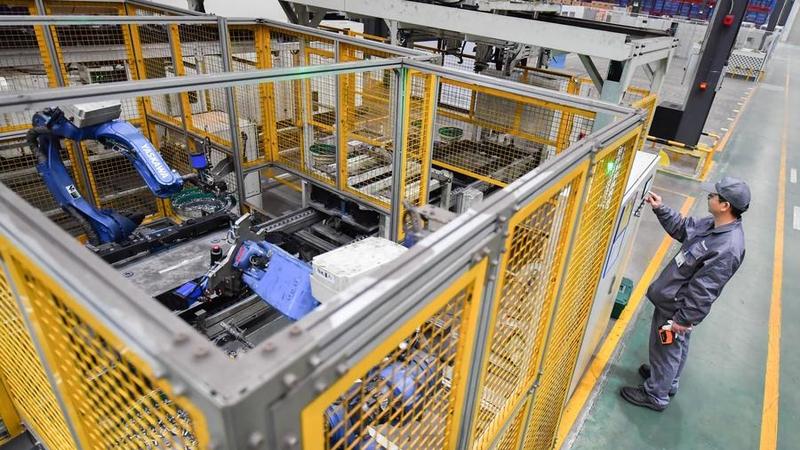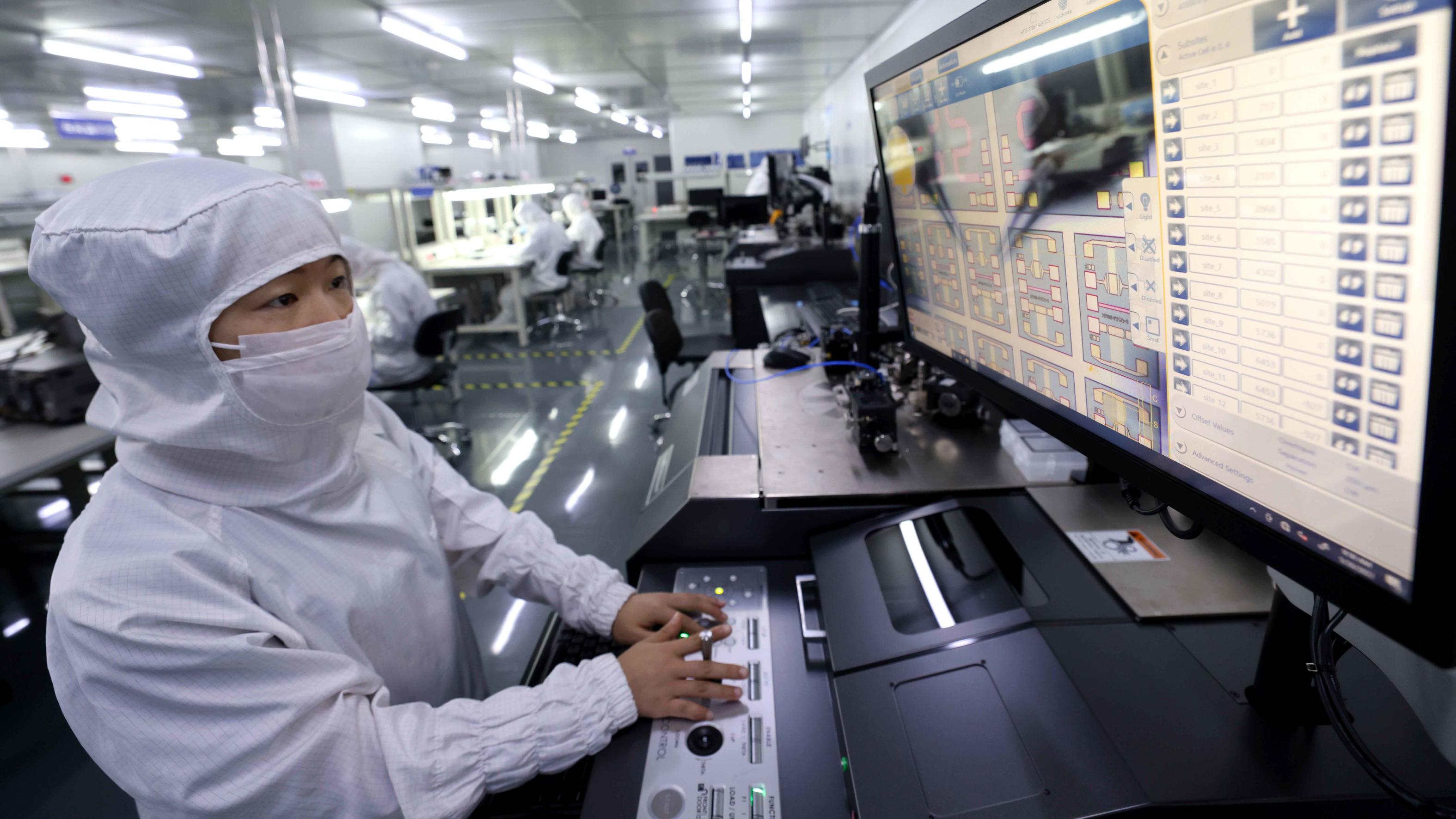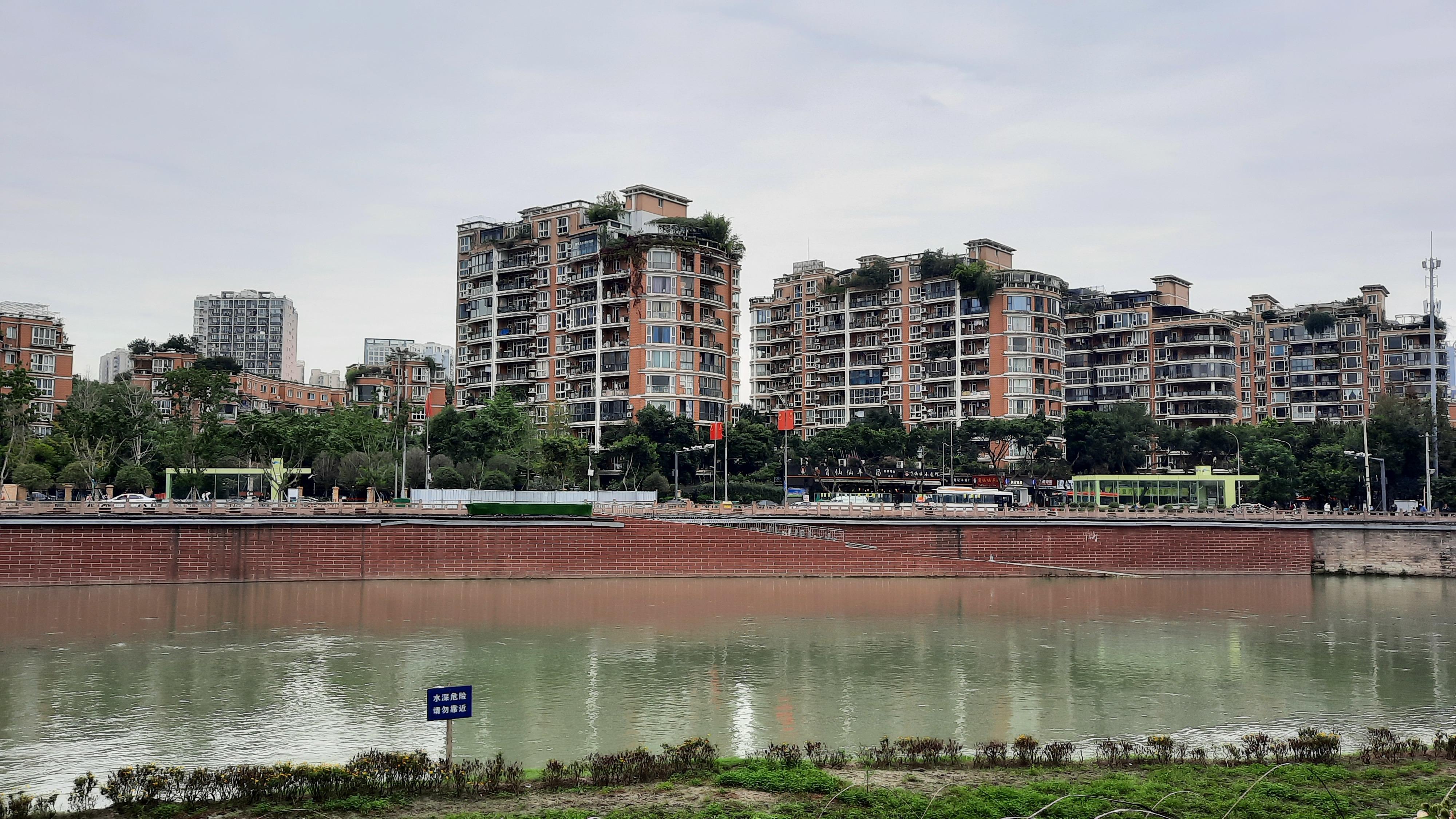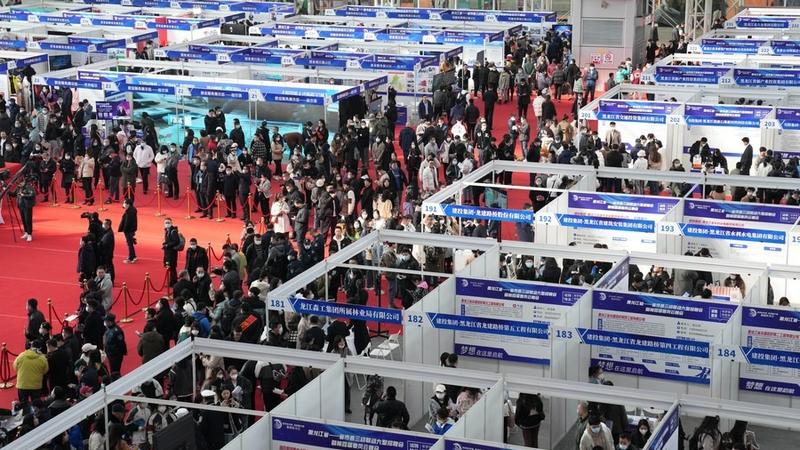 A staff member works at an auto parts factory in Liuyang city, central China's Hunan province, Feb 1, 2024. (PHOTO / XINHUA)
A staff member works at an auto parts factory in Liuyang city, central China's Hunan province, Feb 1, 2024. (PHOTO / XINHUA)
BEIJING - China's industrial production picked up pace in the first two months of 2024, accompanied by faster growth in the high-tech manufacturing and the consumer goods manufacturing sectors, official data showed Monday.
The value-added industrial output, an important economic indicator, went up 7 percent year-on-year during the January-February period, the National Bureau of Statistics said.
The growth accelerated 0.2 percentage points from December 2023, according to the NBS.
On a monthly basis, industrial output edged up 0.56 percent in February from the previous month.
Commenting on the industrial data, NBS spokesperson Liu Aihua highlighted the notable uptick in the high-tech manufacturing and consumer goods manufacturing sectors.
Commenting on the industrial data, NBS spokesperson Liu Aihua highlighted the notable uptick in the high-tech manufacturing and consumer goods manufacturing sectors
High-tech manufacturing registered a 7.5 percent year-on-year increase in industrial output during the January-February period, up 1.1 percentage points from December 2023. The figure saw accelerated expansion for the third consecutive month, Liu said in a press conference.
During the same period, the consumer goods manufacturing sector saw its value-added industrial output rise 4.7 percent year-on-year, accelerating by 4.4 percentage points from that in December 2023, according to Liu.
While cautioning about the remaining challenges faced by industrial enterprises stemming from a lack of orders and rising costs, Liu also highlighted the increasing innovation capacity in the industrial sector. She noted that China has nurtured a number of competitive industries in key fields.
A slew of supportive policies introduced lately including large-scale equipment renewal, trading-in of consumer goods and business environment optimization, are expected to further boost the subsequent industrial economy, according to Liu.
The industrial output is used to measure the activity of enterprises each with an annual main business turnover of at least 20 million yuan ($2.82 million).
 An employee calibrates equipment used in the manufacture of semiconductors at a company in Hefei, capital of East China's Anhui province. (XIE CHEN / FOR CHINA DAILY)
An employee calibrates equipment used in the manufacture of semiconductors at a company in Hefei, capital of East China's Anhui province. (XIE CHEN / FOR CHINA DAILY)
Fixed-asset investment
For the same period, the country's fixed-asset investment went up 4.2 percent year-on-year, 1.2 percentage points higher than the full-year growth rate of 2023, according to Monday's data.
The investment totaled 5.0847 trillion yuan in January and February combined, the NBS said.
ALSO READ: China pledges measures to boost domestic consumption in 2024
According to the NBS data, private investment in fixed assets rose 0.4 percent year-on-year in the first two months, reversing a decline observed in 2023. Private investment in manufacturing, hotels, catering and transportation all registered double-digit growth
NBS spokesperson Liu highlighted some bright spots in investment.
Manufacturing investment rose 9.4 percent year-on-year during the period, accelerating by 2.9 percentage points from that of 2023. Investment in infrastructure construction rose 6.3 percent from a year ago, 0.4 percentage points higher than that of last year.
Investment in new growth drivers saw relatively fast expansion, with investments in high-tech industries up by 9.4 percent year-on-year, said Liu.
Meanwhile, investment in technological upgrades in manufacturing rose 15.1 percent year-on-year. Investment in solar power and wind power rose 46.4 percent and 17.7 percent in the first two months, respectively.
More capital support was also rendered to enhance people's livelihoods, with investment in the power and heating production and supply sector increasing by 32.7 percent, and in the water management sector by 13.7 percent.
According to the NBS data, private investment in fixed assets rose 0.4 percent year-on-year in the first two months, reversing a decline observed in 2023. Private investment in manufacturing, hotels, catering and transportation all registered double-digit growth.
As policies aimed at boosting effective investment continue to take effect, investment is expected to maintain steady expansion in the next stage, Liu said.
 People walk in the Jinli Ancient Street in Chengdu, capital of Sichuan province, China, on Oct 20, 2023. (GARY CHIU / CHINA DAILY)
People walk in the Jinli Ancient Street in Chengdu, capital of Sichuan province, China, on Oct 20, 2023. (GARY CHIU / CHINA DAILY)
Retail sales
The official data also revealed China's retail sales of consumer goods, a major indicator of the country's consumption strength, climbed 5.5 percent year-on-year for the first two months.
The growth was compared with an increase of 3.5 percent registered during the January-February period of 2023.
Retail sales in the country's urban regions rose 5.5 percent year-on-year during the period, while that in rural areas expanded 5.8 percent, according to data from the bureau.
Online retail sales jumped 15.3 percent year-on-year, with online retail sales of physical goods expanding 14.4 percent and accounting for 22.4 percent of the total retail sales of consumer goods.
The government would strive to foster new forms of consumption including digital, environmentally friendly and health-related consumption, while stabilizing and expanding conventional consumption patterns, said NBS spokesperson Liu Aihua
Retail sales of services went up 12.3 percent year-on-year during the January-February period, the NBS data revealed.
China vowed to expand domestic demand and promote sound economic flows, while promoting steady growth in consumer spending this year, according to the government work report.
NBS spokesperson Liu said the country's continued economic recovery and steady income growth would create favorable conditions for expanding consumer spending. The government would strive to foster new forms of consumption including digital, environmentally friendly and health-related consumption, while stabilizing and expanding conventional consumption patterns, she said.
Other indicators unveiled Monday demonstrated that the country's economic performance continued to improve in the first two months of the year.
The value-added industrial output rose 7 percent year-on-year during the January-February period, accelerating from a rise of 6.8 percent registered in December 2023. Fixed-asset investment grew 4.2 percent year-on-year, quickening from an increase of 3 percent recorded in 2023.
Despite a complex and grave environment for economic development, "China has conditions and support to achieve its full-year growth target of around 5 percent for 2024 through enhanced efforts," Liu said.
 This photo taken from the Wangjiang Pavilion Park shows residential buildings near the Jin River in Chengdu, capital of Sichuan province, China, on Oct 20, 2023. (GARY CHIU / CHINA DAILY)
This photo taken from the Wangjiang Pavilion Park shows residential buildings near the Jin River in Chengdu, capital of Sichuan province, China, on Oct 20, 2023. (GARY CHIU / CHINA DAILY)
Property development
Meanwhile, investment in property development in China fell 9 percent year-on-year to 1.1842 trillion yuan in the first two months of 2024, the official data showed.
Investment in the sector maintained a falling trend as sales of newly built property also fell 20.5 percent year-on-year in terms of floor area to 113.69 million square meters in the same period.
In terms of value, sales of newly built property fell 29.3 percent year-on-year to 1.0566 trillion yuan, the data showed.
Based on the data for both property sales and home prices, China's property market is still in the process of adjustment and transformation, Liu said
The decline in investment in the first two months had narrowed by 0.6 percentage points from the 9.6 percent drop in 2023, NBS' Liu said.
Based on the data for both property sales and home prices, China's property market is still in the process of adjustment and transformation, Liu said.
The NBS spokesperson noted that both the Central Economic Work Conference held last December and the annual "two sessions" held earlier this month had put forward clear requirements for refining real estate policies and promoting the stable and healthy development of the real estate market.
By adapting to the development trend of new urbanization and changes in the supply and demand in the real estate market, China will speed up the fostering of a new development model for real estate, according to Liu.
She added that the country will scale up the building and supply of government-subsidized housing, while also improving the basic systems for commodity housing to meet people's essential need for a home and their different demands for better housing.
 This photo taken on March 18, 2023, shows a view of a job fair in Harbin, northeast China's Heilongjiang province. (PHOTO / XINHUA)
This photo taken on March 18, 2023, shows a view of a job fair in Harbin, northeast China's Heilongjiang province. (PHOTO / XINHUA)
Urban unemployment
During the January-February period, the surveyed urban unemployment rate on average in China stood at 5.3 percent, the NBS said.
China's employment situation was generally stable during the period, according to the NBS.
In January, the country's surveyed urban unemployment rate reached 5.2 percent.
In February, the rate came in at 5.3 percent, 0.1 percentage points higher from January due to the impact of the Chinese New Year holiday, which is in line with the seasonal trajectory of the job market, NBS spokesperson Liu said.
Last month, the surveyed urban unemployment rate for 31 major Chinese cities stood at 5.1 percent, down 0.6 percentage points year-on-year. The figure for rural migrant workers hit 4.8 percent, dropping 1.2 percentage points on a yearly basis, according to the NBS spokesperson
China's surveyed urban unemployment rate decreased by 0.3 percentage points respectively in January and February compared with the same period in 2023, Liu added.
She emphasized the improvement in the employment situation in big cities and the stability of the job market for rural migrant workers.
Last month, the surveyed urban unemployment rate for 31 major Chinese cities stood at 5.1 percent, down 0.6 percentage points year-on-year. The figure for rural migrant workers hit 4.8 percent, dropping 1.2 percentage points on a yearly basis, according to the NBS spokesperson.
In 2024, China aims to create over 12 million jobs in urban areas and keep the surveyed urban unemployment rate at about 5.5 percent.
Favorable factors for stable employment are accumulating for the next stage, Liu said, highlighting the rise in job opportunities in emerging industries and the strengthening of policy support for employment promotion.
"The further recovery of the economy, especially the service sector, and the accelerated transformation of growth drivers will boost employment growth in fields like digital economy, green economy and silver economy," she said.
Localities and government agencies are giving greater priority to and strengthening fiscal, tax and financial support for employment, while also improving employment services for the youth, Liu said.
Noting that there are structural problems in the job market, she said continuous efforts from all sides are still needed to maintain employment stability.
 A citizen walks past movie posters at a cinema in Hangzhou City, east China's Zhejiang province, Feb 16, 2024. (PHOTO / XINHUA)
A citizen walks past movie posters at a cinema in Hangzhou City, east China's Zhejiang province, Feb 16, 2024. (PHOTO / XINHUA)
Service sector
Meanwhile, the country's service sector registered faster growth, with an official production index up 5.8 percent year-on-year, according to the official data.
A warming consumer market and booming holiday consumption contributed to vibrant services, Liu said, citing surging catering incomes, box office sales, and tourism spending during the Spring Festival holiday in February
The increase quickened from the 5.5-percent growth rate seen in the same period of 2023, according to the NBS.
"The service sector showed sound growth momentum with robust accommodation, catering and transportation sectors," NBS spokesperson Liu said.
A warming consumer market and booming holiday consumption contributed to vibrant services, Liu said, citing surging catering incomes, box office sales, and tourism spending during the Spring Festival holiday in February.
In breakdown, the accommodation and catering sector reported the largest uptick of 12.1 percent, followed by information transmission, software and IT services of 10.4 percent. The financial sector also logged a robust increase of 8.2 percent, and transportation, warehousing and postal services went up 7.1 percent. The wholesale and retail sales were up by 7 percent.
In February, another index measuring business activities of the service sector stood at 51 percent, up 0.9 percentage points from January.
The railway and air transportation, catering, monetary and financial services, environmental protection and public facility management, and the cultural, sports and entertainment sectors stayed in the high-climate zone of over 55 percent.


